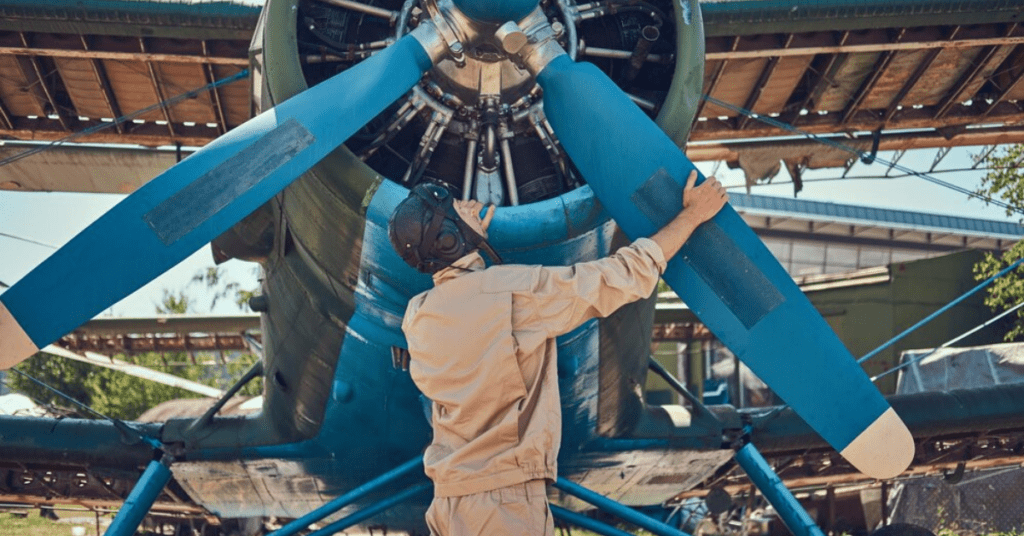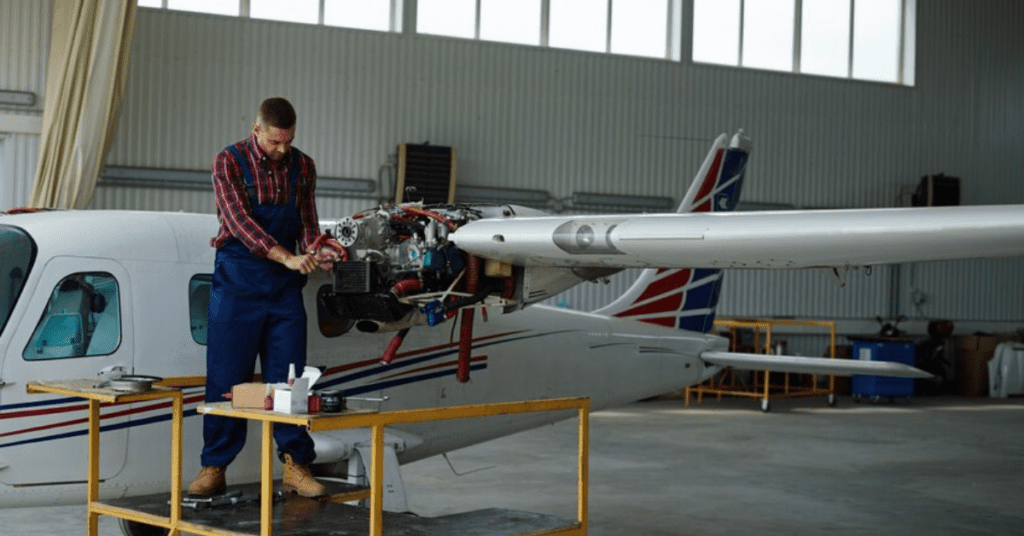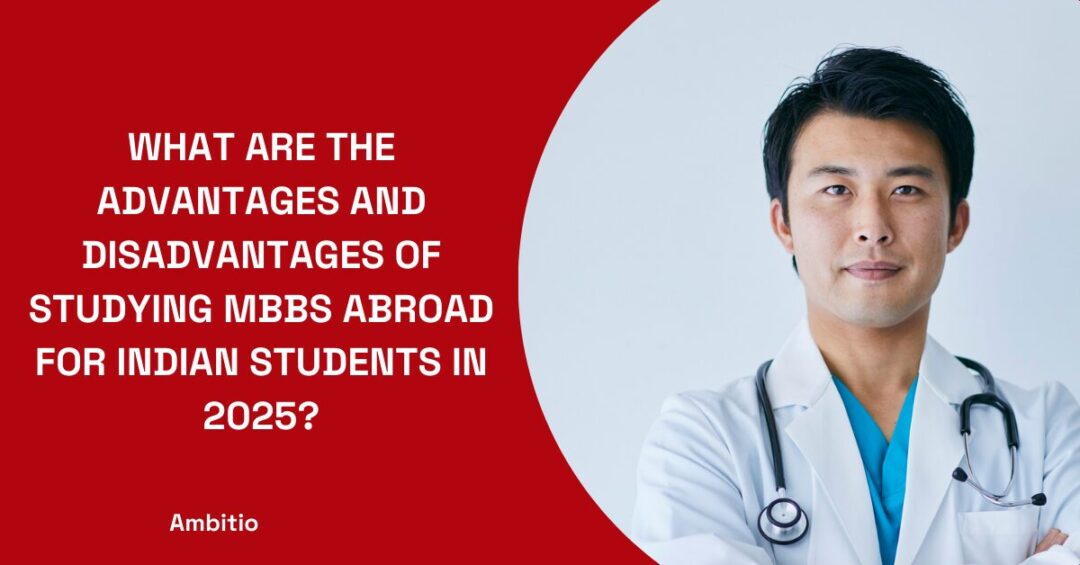13 August 2024
6 minutes read
10 Top Universities For MS In Aerospace Engineering In USA

Key Takeaways
- MS in Aerospace Engineering in the USA offers top-tier education with tuition between $20,000-$60,000 and starting salaries of $70,000-$100,000.
- Interdisciplinary programs prepare students for diverse careers in the $400 billion global aerospace market.
- Admission requires a GPA of 3.0+, strong GRE scores, and English proficiency for success in challenging coursework.
Becoming an aerospace engineer in the USA is a dream for many aspiring engineers around the globe. With the USA’s rich history in aviation and space exploration, pursuing a Master of Science (MS) in Aerospace Engineering here offers unparalleled opportunities. This field, a perfect blend of aeronautical and astronautical engineering, has been at the forefront of technological advancements, making it an attractive career choice.
Why Choose MS in Aerospace Engineering in the USA?
The USA is renowned for its leadership in aerospace engineering, making it an ideal destination for students aiming to become aerospace engineers. An MS in Aerospace Engineering in the USA offers a blend of theoretical knowledge and practical skills, essential for excelling in the aerospace industry.

World-Class Education
Pursuing a degree in aerospace engineering in the USA offers access to world-renowned universities that excel in aeronautics and aerospace studies. These institutions provide cutting-edge facilities, state-of-the-art research opportunities, and industry connections that are unparalleled.
Rigorous Admission Process
The admission process for an MS in Aerospace Engineering in the USA is designed to select the best candidates. Your average GRE scores, statement of purpose, and demonstrated proficiency in the English language are crucial factors that ensure you are well-prepared for the challenges of the program.
Interdisciplinary Opportunities
Many programs integrate mechanical engineering principles into the aerospace curriculum, allowing you to develop a comprehensive skill set. This interdisciplinary approach enhances your versatility in the field and prepares you for various career paths within the aerospace sector.
Global Career Prospects
Graduating with an MS in Aerospace Engineering from a top US university opens doors to global career opportunities. The combination of a rigorous education, industry connections, and a focus on both aeronautics and mechanical engineering makes you a highly competitive candidate in the global job market.
What MS Aerospace Engineering Course Is All About?
MS in Aerospace Engineering programs in the USA offer a comprehensive curriculum, designed to cover all aspects of aerospace engineering. The courses are usually divided into:
- Core Courses: Fundamental subjects like aerodynamics, flight mechanics, control systems, and structures form the essential foundation of aerospace engineering. These courses are crucial for students with a bachelor’s degree in engineering, equipping them with the technical skills needed for advanced study and professional practice.
- Specialized Electives: Specialized electives allow students to focus on areas such as propulsion, spacecraft design, unmanned aerial vehicles, or space weather. These courses enable students to tailor their education to specific career goals, gaining expertise in niche subfields that are highly valued in the industry.
- Research Opportunities: Many programs offer research projects or thesis options, allowing students to explore specific topics in depth. These opportunities enhance critical thinking and technical writing skills, important for publishing research and demonstrating English language proficiency.
- Laboratory and Practical Experience: Hands-on labs and design projects allow students to apply theoretical knowledge to real-world scenarios. This practical experience is vital for students with a bachelor’s degree in engineering, helping them to develop problem-solving skills and prepare for industry challenges.
- Capstone Projects or Thesis: Capstone projects or thesis work serve as the culmination of the program, showcasing a student’s ability to apply learned concepts to complex problems. These projects also help refine technical writing and communication skills, essential for career success.
- Interdisciplinary Options: Some programs offer courses in related fields like systems engineering, computational mechanics, or environmental science. These interdisciplinary options broaden students’ expertise, preparing them for the complex, interconnected challenges of modern engineering.
- Professional Development: Courses or workshops in technical writing, communication, and project management help students improve their English language proficiency and soft skills. These are essential for effective collaboration, leadership, and career advancement in the engineering field.
10 Top Universities In USA For MS In Aerospace Engineering
The USA is home to some of the world’s best universities offering MS in Aerospace Engineering.
Here’s a list of top universities:
| University | Average Tuition Fees (per year) | Average Starting Salary (per year) |
|---|---|---|
| Massachusetts Institute of Technology (MIT) | $53,450 | $90,000 – $100,000 |
| Stanford University | $56,169 | $85,000 – $95,000 |
| California Institute of Technology (Caltech) | $54,570 | $85,000 – $95,000 |
| University of Michigan, Ann Arbor | $50,000 – $55,000 | $80,000 – $90,000 |
| Georgia Institute of Technology | $30,000 – $40,000 | $75,000 – $85,000 |
| Purdue University | $28,794 (in-state) / $47,294 (out-of-state) | $75,000 – $85,000 |
| University of Illinois, Urbana-Champaign | $34,330 | $75,000 – $85,000 |
| University of Texas, Austin | $18,000 (in-state) / $36,000 (out-of-state) | $75,000 – $85,000 |
| University of California, Los Angeles (UCLA) | $32,858 | $75,000 – $85,000 |
| Texas A&M University | $24,106 (in-state) / $46,644 (out-of-state) | $70,000 – $80,000 |
What Are The Academic Requirements for MS in Aerospace Engineering
To pursue an MS in Aerospace Engineering in the USA, students must meet certain academic requirements.
The eligibility criteria typically include:
| Requirement | Description |
|---|---|
| Bachelor’s Degree | A bachelor’s degree in aerospace engineering, mechanical engineering, or a related field is required. |
| GPA | A minimum GPA of 3.0 or equivalent is typically required, though competitive programs may expect higher. |
| GRE Scores | GRE scores are often required, with competitive programs looking for high quantitative scores. |
| English Language Proficiency | For international students, proof of English language proficiency (TOEFL, IELTS) is required. |
| Statement of Purpose (SOP) | A well-written personal statement outlining your academic background, career goals, and reasons for pursuing the degree. |
| Letters of Recommendation | Typically, 2-3 letters of recommendation from professors or professionals familiar with your work. |
| Relevant Coursework | Coursework in subjects like calculus, physics, and core engineering disciplines is usually expected. |
| Research/Work Experience | Some programs prefer applicants with research experience or relevant work experience in the field. |
What Is The Cost of Studying MS In Aerospace Engineering In The USA
The cost of studying MS in Aerospace Engineering in the USA is significantly high – we understand. It also varies across universities. But you now need not to worry about they as many universities offer scholarships.

However, here is a detailed breakdown of the expense you are likely to face:
| Expense Category | Description | Estimated Cost (per year) |
|---|---|---|
| Tuition Fees | Cost of academic instruction, varies significantly by university and residency status (in-state vs. out-of-state). | $20,000 – $60,000 |
| Living Expenses | Includes housing, utilities, food, and other daily expenses. Costs vary depending on location. | $10,000 – $20,000 |
| Health Insurance | Mandatory health coverage for international and domestic students. | $1,500 – $3,000 |
| Books and Supplies | Costs for textbooks, course materials, and supplies required for classes. | $1,000 – $2,000 |
| Transportation | Public transport, car maintenance, and travel expenses (can vary widely based on location and lifestyle). | $1,000 – $2,500 |
| Student Fees | University-specific fees for services like libraries, gyms, and campus facilities. | $1,000 – $2,500 |
| Visa and SEVIS Fees | For international students: visa application and SEVIS registration fees. | $400 – $600 (one-time cost) |
| Miscellaneous Expenses | Other personal expenses, including clothing, entertainment, and unexpected costs. | $2,000 – $5,000 |
| Travel Costs (International Students) | Costs associated with traveling to and from the USA (airfare). | $1,000 – $3,000 (round trip) |
What Are The Career Opportunities After MS in Aerospace Engineering
Graduates with an MS in Aerospace Engineering in the USA have a wide array of career opportunities, such as:
| Job Title | Description | Potential Employers |
|---|---|---|
| Aerospace Engineer | Design and develop aircraft, spacecraft, satellites, and missiles | Boeing, NASA, Lockheed Martin |
| Aerodynamics Engineer | Focus on improving the performance and efficiency of aircraft through design and testing | Aviation companies, research labs |
| Structural Engineer | Design and analyze structural components of aircraft and spacecraft for safety and durability | Aerospace manufacturers, defense contractors |
| Avionics Engineer | Develop and test electrical and electronic systems used in aircraft and spacecraft | Commercial airlines, space agencies |
| Systems Engineer | Coordinate and oversee the design and development of complex aerospace systems | Aerospace companies, government agencies |
| Propulsion Engineer | Design, develop, and test engines and propulsion systems for aircraft and spacecraft | Engine manufacturers, research organizations |
| Flight Test Engineer | Conduct flight tests to evaluate the performance and safety of aircraft and spacecraft | Testing facilities, military bases |
| Quality Control Engineer | Ensure aerospace products meet quality and safety standards | Manufacturing plants, quality assurance departments |
| Research Scientist | Conduct advanced research in aerospace engineering to develop new technologies and applications | Universities, research institutions |
| Engineering Manager | Oversee engineering teams, project management, and strategic planning in aerospace engineering | Large aerospace firms, government agencies |
Conclusion
In essence, if you’re looking to make a meaningful impact in aerospace, the USA offers a platform like no other. It’s about more than just academics; it’s about positioning yourself at the heart of an industry that defines what’s possible.
By studying in the USA, you’re not just earning a degree; you’re investing in a future where your skills are in high demand globally. The rigorous training and diverse experiences you’ll gain will prepare you for a career that can take you anywhere—from developing cutting-edge aircraft to exploring the frontiers of space.
Seize the opportunity to study in the USA, where innovation meets tradition in education. Ambitio’s comprehensive support will guide you through selecting universities, preparing for entrance exams, and understanding the cultural landscape, ensuring a smooth transition and successful academic experience in the United States.
FAQs
What are some of the top universities for MS in Aerospace Engineering in the USA?
Some top universities include the Massachusetts Institute of Technology, Stanford University, California Institute of Technology, and the University of Michigan.
What are the eligibility requirements for pursuing an MS in Aerospace Engineering in the USA?
The main requirements usually include having a bachelor’s degree in a related field, submitting GRE scores, letters of recommendation, and a statement of purpose.
What skills can I gain from an MS in Aerospace Engineering?
This degree can equip you with technical skills like system design, simulation, and modeling, and a strong understanding of aerodynamics, propulsion, and avionics.
What are some of the technological advancements impacting the field of aerospace engineering?
Advances in AI, increased focus on sustainability, and the rise of private space companies are all impacting the field significantly.
What are the job opportunities after completing an MS in Aerospace Engineering in the USA?
Jobs opportunities are available in various sectors such as aerospace manufacturing, spacecraft design, defense and security, and research and development.
What are the financial aids available for an MS in Aerospace Engineering in the USA?
Financial aid can come in the form of scholarships, research assistantships, teaching assistantships, and student loans.
How can technological advancements like AI impact my career in Aerospace Engineering?
AI is becoming integral to aerospace engineering, it can lead to job roles in AI-powered system design, predictive maintenance, and more.

You can study at top universities worldwide!
Get expert tips and tricks to get into top universities with a free expert session.
Book Your Free 30-Minute Session Now! Book a call now




























